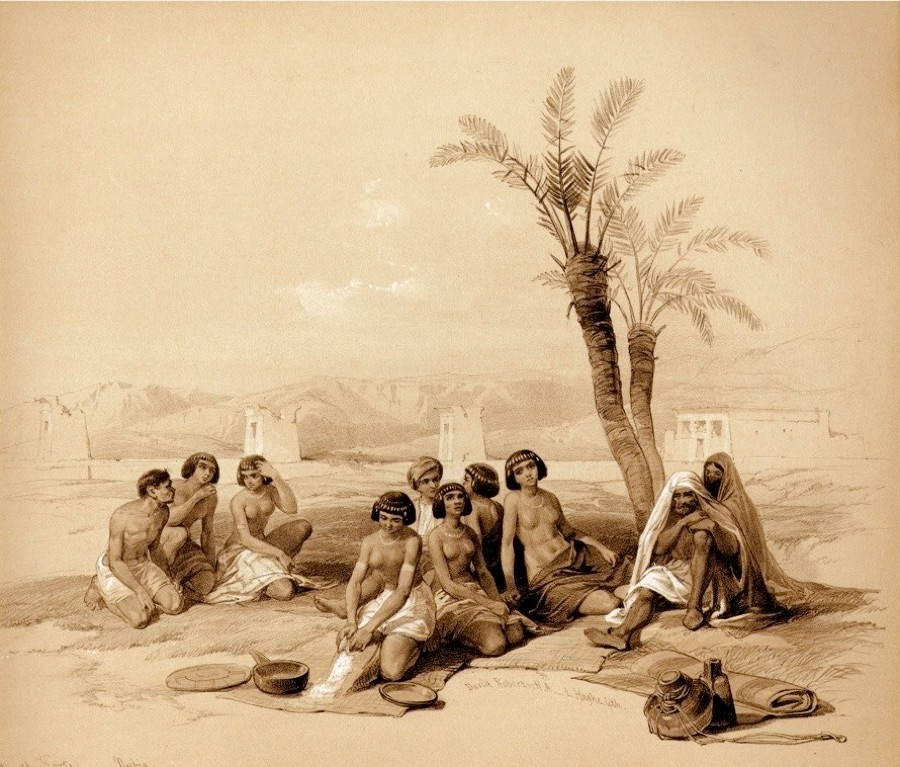ABYSSINIAN SLAVES AT KORTI.
THESE slaves were seen by Mr. Roberts on their way to the market at Cairo. They had been landed to rest and refresh themselves, and to prepare dourra, or Indian corn, for bread: the girl in the foreground is engaged in this occupation. The corn is simply ground by being rubbed between two stones; it is afterwards either made into bread, or soaked in water, like oatmeal, and drunk. The group, Mr. Roberts says, was composed of boys and young women; some of the slaves appeared to be sickly, two were lying apart and seemed to be in the last stage of consumption: the sight was a very melancholy one. The slave-merchants were rather good-looking Nubians, except one, who was brutal in his manners and appearance, and, when I saw him, intoxicated, - a vice rarely seen in this country. He was not black, but his looks were sinister, and it would be difficult to find a character more decidedly marked as fitted for his calling, than I observed in the countenance of this fellow: he persisted in following us about, in expectation that we should purchase.
The female slaves from Abyssinia are much prized in Egypt for their gentleness and intelligence; they have beautiful eyes and rich black tresses, and their complexion is a clear brown. They often suffer much in the passage of the desert and the voyage down the Nile, but, once sold and established, they are clothed and fed, and treated with care and kindness. They form the hareem of the moderately rich or middle classes, and the general maternity of the citizens of Lower Egypt are the Abyssinian women, who have been thus conveyed to a market and a home.
Roberts’s Journal Warburto


